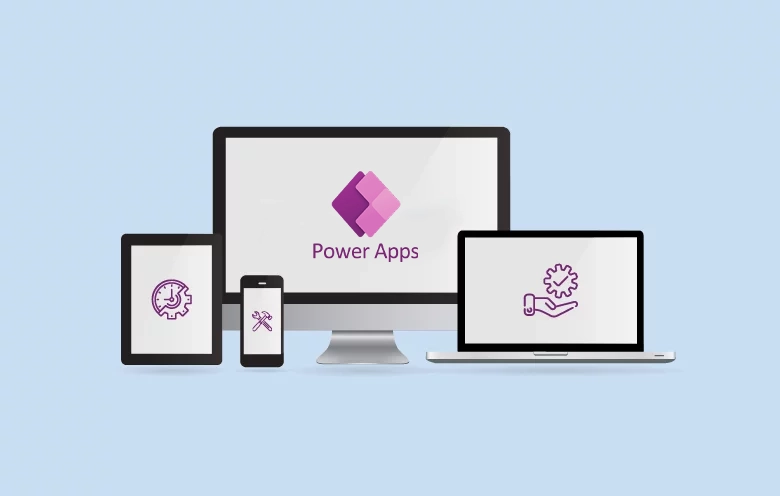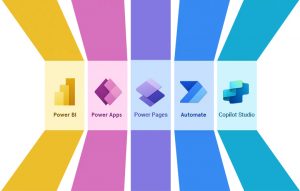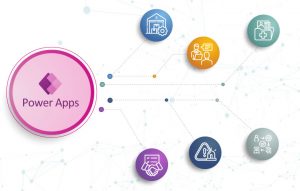Amid the current situation of the COVID-19 pandemic, businesses are finding it difficult to leverage a variety of different work tools to manage their operations. Alongside this, it is challenging for employees to take up time-consuming activities. Microsoft Power Apps can act as a savior during this tough time, as it introduces a smart way to increase the productivity of businesses even amid this outbreak. Using Power Apps, your organization will gain the ability to easily coordinate business processes while eliminating any operational challenges. In this blog post, we will learn some of the interesting use cases of Power Apps that is helping organizations to deal with the current situation.
What are Power Apps
Microsoft Power Apps is designed to easily and efficiently build business applications to meet the unique needs of companies. This encourages the production of mobile and desktop applications to reduce manual processes. Additionally, Power Apps lets businesses to securely build, share and connect these apps to external sources within minutes.
Getting started with Power Apps
Working with Power Apps will require looking into your existing process and strategizing on building an app that can fill the technological gap you are facing. By doing so, you will get the idea of drawing a concept of how you want your app to perform. Power Apps offers two best options: canvas app and model-driven app. Building an app using canvas will enable you to have more customization and control in designing your user experience while the model-driven apps feature pre-existing design templates for you to drag-and-drop. Once you have your app created, simply choose a platform to link and deploy it while setting your storage options. It’s that easy!
Power Apps use cases for the current pandemic situation
Remote collaboration during COVID-19
With the use of Power Apps, your enterprise can change the way your remote workforce collaborates and connects to the internal team. Power Apps allows even a non-technical person to develop a business app instantly, using a familiar template to get things up and running while automating workflows.
Power Apps for remote team collaboration can be linked using cloud platforms for easy access through Office 365, Dynamics CRM, Salesforce, Dropbox, and OneDrive or even on-site systems like SharePoint, SQL, Server, Oracle databases and SAP, which means that no additional outlay is required. Your employees can then share these apps with their team members just by typing in their email address, making collaboration the center of app development.
Setting up a crisis communication application
Bringing a team together and collaborating for information sharing to the changing situation is certainly one of the biggest communication challenges for any business currently. We encourage enterprises to use the Power Apps framework during this pandemic for improved communications. The use of Power Apps will enable your employees to exchange information, report their work status (e.g., working from home) and make requests. This allows managers to communicate across their teams and allow central response teams to monitor status across the organization. Moreover, your admins may also use the app to deliver news, alerts, and information related to your organization as well as to provide emergency communication from different locations.
Healthcare emergency response application
While the epidemic of COVID-19 continues, many healthcare providers are struggling to monitor and gain control over vital resources such as available beds, limited equipment, including ventilators and masks. In such scenarios, healthcare institutes can leverage Power Apps and start taking the help of their frontline employees, such as medical officers and nurses to collect information using their mobile phones. This information can be stored using an emergency response app to set up a decision support network to handle emergencies. Through which the collected information can assist the emergency managers to make quick decisions about where to allocate the resources in real-time.
Using a hospital emergency response application helps in reporting of the current status of registered nurses and medical practitioners, the number of supplies in-use, tracking on-site supplies on each floor and maintaining a record of the used stock. Moreover, making demands for additional personnel by department, role, and urgency as well as recording reports of those positive with COVID-19, can all be monitored using this single application.

Unlocking efficiency: Microsoft Power Platform governance and best practice
Event agenda
- M365 environments and their organization level standards.
- Managing the business and non-business connectors and how to control them with DLP policies.
- What’s the importance of monitoring logs and their storage occupancy?
- How to manage the ‘Users’ and ‘Contributors’ at organization level?
Good news!
Integrating Power Apps with your current platform will support your business in numerous scenarios, helping you to meet your organizational goals. Microsoft has announced that it is offering six months of free licensing for certain cloud applications to help organizations respond during the COVID-19 outbreak. Licenses available with this offer include the Microsoft Power Platform.
It is the right time to seize this opportunity and transform your business operations exponentially. If you are ready to start building the perfect apps for your organization but are not sure how Power Apps can help, then leverage our Power Apps consulting services. We can help you build custom applications and business automation solutions that can facilitate your organization to survive the current pandemic as well as prepare a better future.









